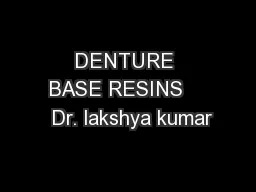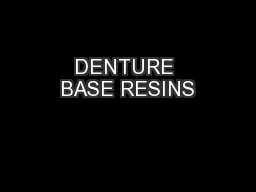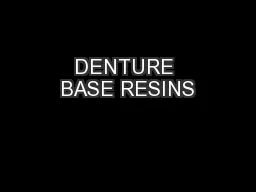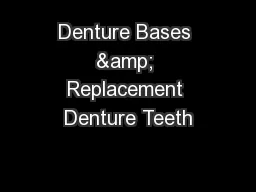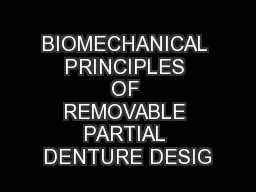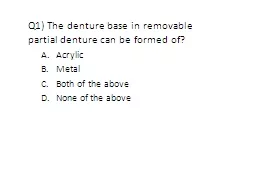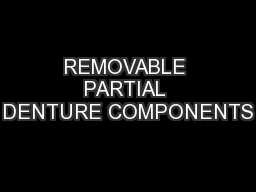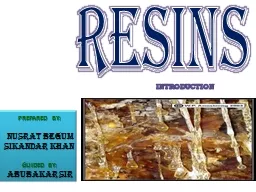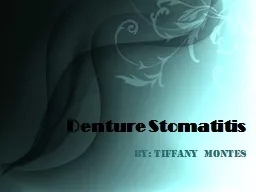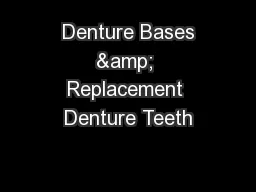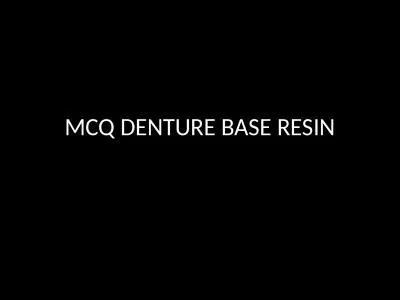PPT-DENTURE BASE RESINS Dr. lakshya kumar
Author : phoebe-click | Published Date : 2018-02-28
Asstt Professor Deptt of Prosthodontics Lecture9 am to 10 am 692014 PART 1 OBJECTIVES At the end of this Topic Define denture base denture base material and denture
Presentation Embed Code
Download Presentation
Download Presentation The PPT/PDF document "DENTURE BASE RESINS Dr. lakshya kuma..." is the property of its rightful owner. Permission is granted to download and print the materials on this website for personal, non-commercial use only, and to display it on your personal computer provided you do not modify the materials and that you retain all copyright notices contained in the materials. By downloading content from our website, you accept the terms of this agreement.
DENTURE BASE RESINS Dr. lakshya kumar: Transcript
Download Rules Of Document
"DENTURE BASE RESINS Dr. lakshya kumar"The content belongs to its owner. You may download and print it for personal use, without modification, and keep all copyright notices. By downloading, you agree to these terms.
Related Documents

